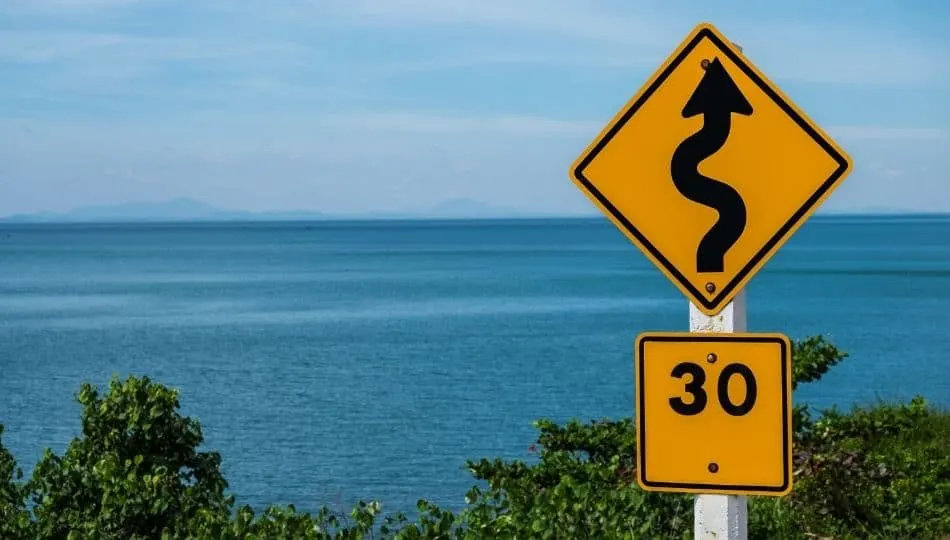
When you’re a beginner cyclist navigating the city, there’s a lot to get used to outside of just riding your bike. Traffic signs is one area that many wonder about while cycling in city areas. Do road signs apply to cyclists or just motor vehicles?
The cyclist is considered a road user and must obey all road traffic signs & signals in the same way as any other roadway vehicle. In addition to this, cyclists must also be aware of cycling specific road signs & signals in certain circumstances, and must obey these in addition to other road signs.
While cyclists must obey a majority of the same traffic signs that motorized vehicles do, there are exceptions. Read further to learn which road signs apply to cyclists and what they mean to the bicycle…
Which Road Signs Apply to Cyclists?
In 2014, Cerema, a public transportation organization based in France created a guide in conjunction with the Transport, Health, and Environment Pan-European Program (or THE PEP) that details the traffic signs and traffic signals that cyclists must obey. The provided information applies to all cyclists from various countries.
However, note that there are some minor differences between countries. So be aware of the following 3 caveats when reading through this article and its references:
- In some countries, the bicycle is classified in a different category than motorized two-wheeled vehicles.
- While signs of warning, prohibition and movement are more or less identical in all countries, there are some differences in regulatory traffic signs. Not only does the value of speed limit signs differ, but the color of the sign can be yellow, blue, green, brown or white.
- While these road signs must be followed by cyclists on the road, cyclists must also remember that all normal traffic signs must also be obeyed the same way you would if you were in a motorized vehicle. This includes, but is not limited to, stop signs, traffic lights, school zones, yield to pedestrians, and railroad crossings. Ensure that your cycling speed is within the designated speed limit, especially in pedestrian-related zones.
Cyclist Road Signs in the US
The table below details all of the notable road signs that must be followed by cyclists on roadways in the United States:
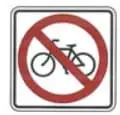 | No Cyclists Some signs, like this one, is identical to its Canadian counterpart. This sign indicates that cyclists are not allowed to travel on this roadway. These signs are usually seen in areas with either special events or overcrowded spaces. |
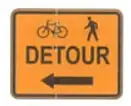 | Bicycle and Pedestrian Detour This sign is often presented in orange color. It indicates that both pedestrians and cyclists alike must take another route aside from their current roadway. This is usually due to construction, restricted areas, or specialized paths. |
 | Yield to Pedestrians This sign indicates the cyclists must yield to pedestrians from this given point. These are usually found in highly-populated areas or large intersections. |
 | Bicycle Lane This sign indicates that the lane is designated for bicycle use only. There should be no pedestrians or motorized vehicles parked or travelling in the lane. |
 | Bicycle Parking This indicates specific areas that are designated for bicycle parking. Usually, these are found in crowded areas; bicycles are generally allowed to be parked anywhere that does not obstruct important entrances or properties. |
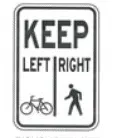 | This sign is identical to its Canadian counterpart. This sign allocates pedestrians and bicycles to a certain lane. This allows traffic to flow at a better rate. There should be no other vehicles in the designated lane. |
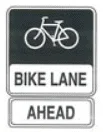 | Bicycle Lane Ahead These signs indicate the beginning of a specific lane that is only permitted for use by cyclists. This can be 24 hours a day or during certain hours that will be stated. |
 | Bicycle Lane Ends These signs indicate the end of a specific lane that is only permitted for use by cyclists. This can be 24 hours a day or during certain hours that will be stated. |
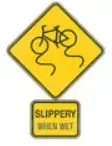 | Slippery When Wet Caution signs like this one are usually present in yellow colour. This sign warns cyclists that the roadway may be slippery, usually due to precipitation. At this time, cyclists should travel at a lower speed and plan their trip accordingly. You may even consider walking your bicycle. |
 | Bicycle Route Marker In the US, there are also bicycle route markers like this one. The sign indicates that the roadway is partially or fully a bicycle route. |
Cyclist Road Signs in Canada
The table below details all of the notable road signs that must be followed by cyclists on roadways in Canada:
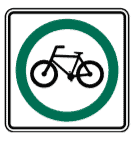 | This sign indicates that cyclists are allowed to travel on this roadway. These signs are usually seen on larger roadways. |
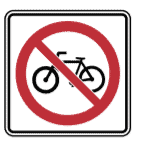 | This sign indicates that cyclists are not allowed to travel on this roadway. These signs are usually seen in areas with either special events or overcrowded spaces. |
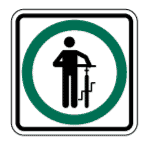 | This sign indicates that a cyclist must dismount from their bicycle and walk with it. This is usually seen in areas with large crowds or populated spaces. |
 | Diamond Bicycle Lane Signs These signs indicate specific lanes that are only permitted for use by cyclists. This can be 24 hours a day or during certain hours that will be stated. |
 | Diamond Bicycle Lane End Signs This sign indicates the end of the “diamond lane”. There is no longer a specific lane that only permits bicycles. |
 | Shared Pathways It indicates that cyclists can ride on some sidewalks, utilizing the same space as pedestrian traffic flow without any separation. Cyclists are expected to share the road with other pedestrians. |
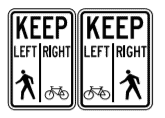 | This sign allocates pedestrians and bicycles to a certain lane. This allows traffic to flow at a better rate. There should be no other vehicles in the designated lane. |
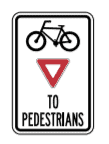 | Bicycles Yield This sign indicates that cyclists should expect a large number of pedestrians in the area. Also, cyclists must yield to pedestrians. |
 | Cyclist Traffic Lights In some areas, there will be traffic lights made specifically for cyclists. On the occasion that these lights are not present, cyclists must follow the regular traffic lights on roadways. On the occasion that both traffic lights and bicycle lights are present, cyclists should follow the latter. |
Cyclist Road Signs in the United Kingdom
The table below details all of the notable road signs that must be followed by cyclists on roadways in the UK:
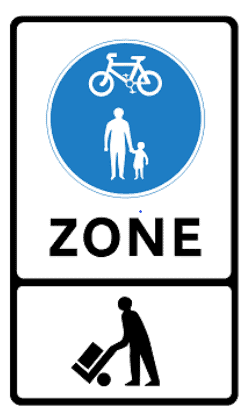 | Pedestrian Area This sign is usually presented as an adult and a child. It indicates that there may be many people loitering in the area. In some areas, this sign is only a warning to “watch out” for people. In others, there is a speed limit that cyclists must follow. |
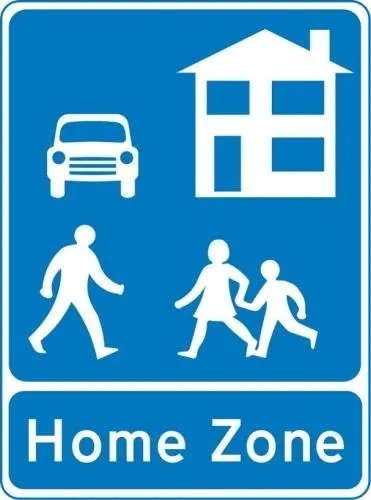 | Residential Area This sign is usually presented with a house, a car and some children playing. It indicates that the area consists of many residents that may be on the roadways. In some areas, this sign comes with a speed limit that cyclists must follow. |
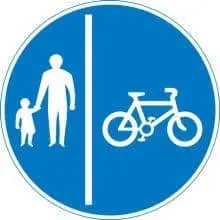 | Separated Pedestrian Cycle Paths This sign is usually presented with symbols for both pedestrians and cyclists. It indicates that cyclists can ride on some sidewalks, but with separated cycling traffic flow. |
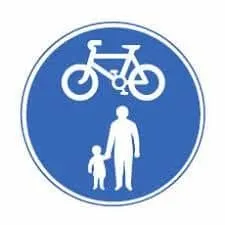 | Mixed Pedestrian Cycle Paths This sign is usually presented with symbols for both pedestrians and cyclists. It indicates that cyclists can ride on some sidewalks, utilizing the same space as pedestrian traffic flow without any separation. |
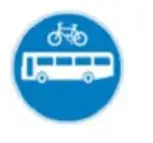 | Indicates a Bus Lane Accessible to Cyclists This sign is usually presented in blue colour. It indicates that cyclists can use the roadway, where space is usually limited. |
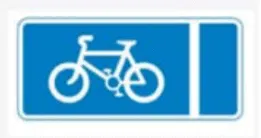 | Indicates a Cycling Lane This sign indicates the presence of or availability of bicycle-specific lanes. |
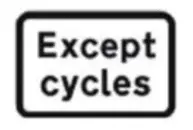 | Cyclist-only Roads This sign indicates that the direction is reserved only for cyclists. There will be no motorized vehicles travelling in the same direction. |
 | Cyclist Traffic Lights In some areas, there will be traffic lights made specifically for cyclists. On the occasion that these lights are not present, cyclists must follow the regular traffic lights on roadways. |
Cyclist Road Signs in Australia
The table below details all of the notable road signs that must be followed by cyclists on roadways in Australia:
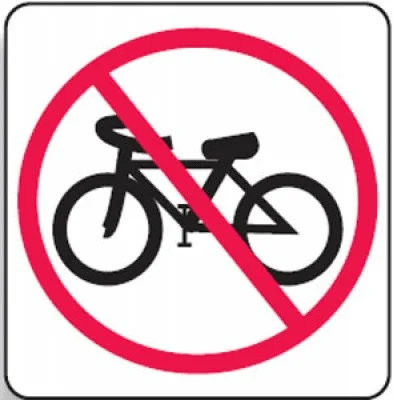 | Bicycles Prohibited Sign This sign is the Australian version of “No Bicycles Allowed”. It indicates that no bicycles are allowed on a specific road. |
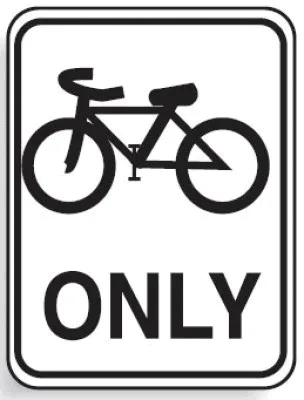 | Bicycles Only Sign This sign indicates that only bicycles are allowed on a road. No other vehicles and pedestrians are allowed. |
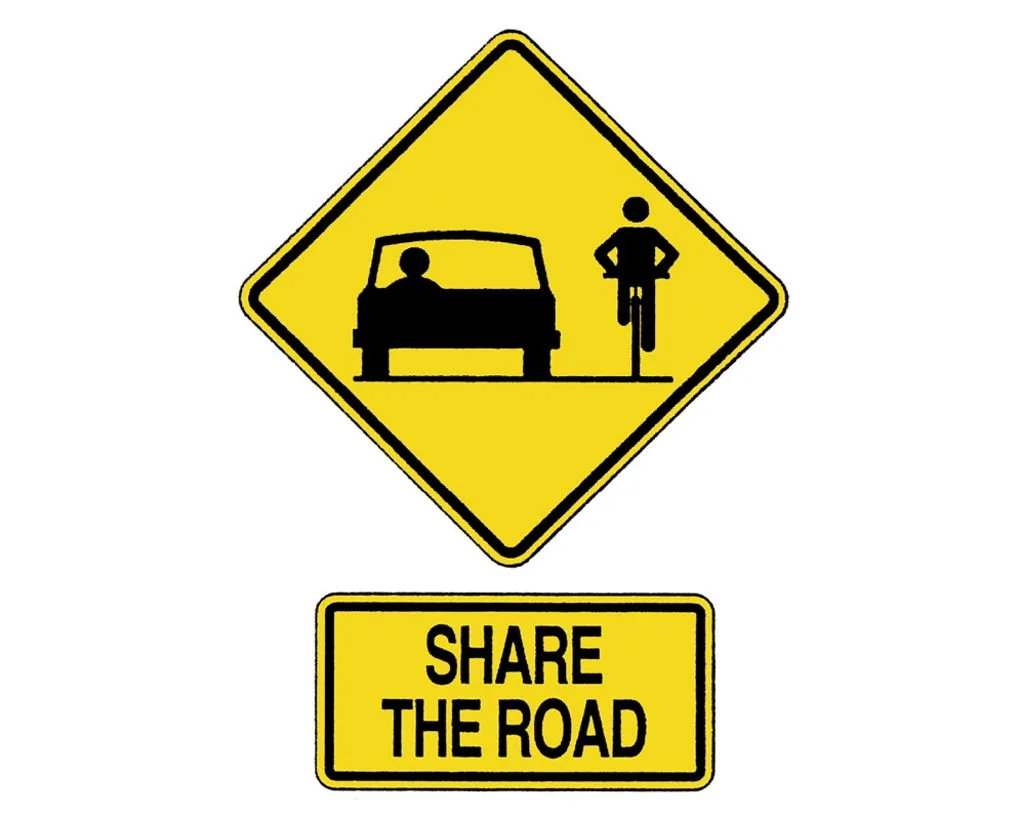 | Share the Road This sign indicates that a driver must share the road with cyclists. This is usually seen on streets or roads that are small and narrow. |
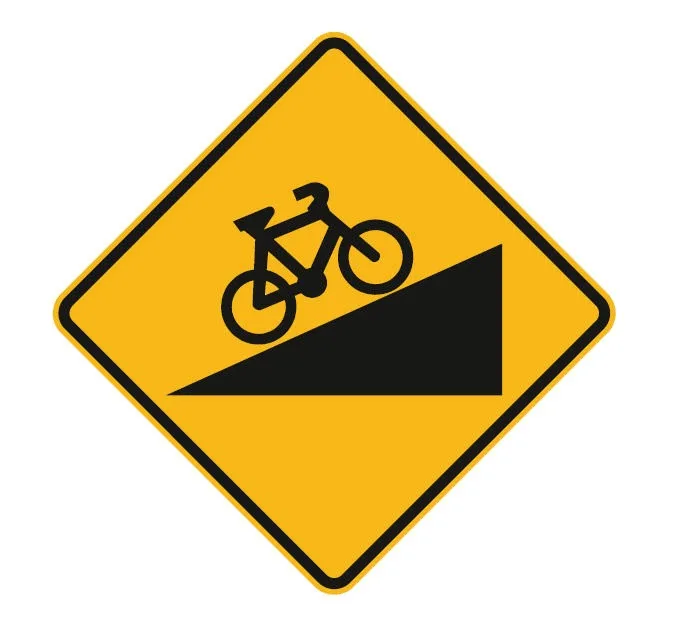 | Steep Climb Sign This sign warns cyclists of an incoming steep climb. Cyclists should prepare themselves to climb the hill. Usually seen in hilly regions. |
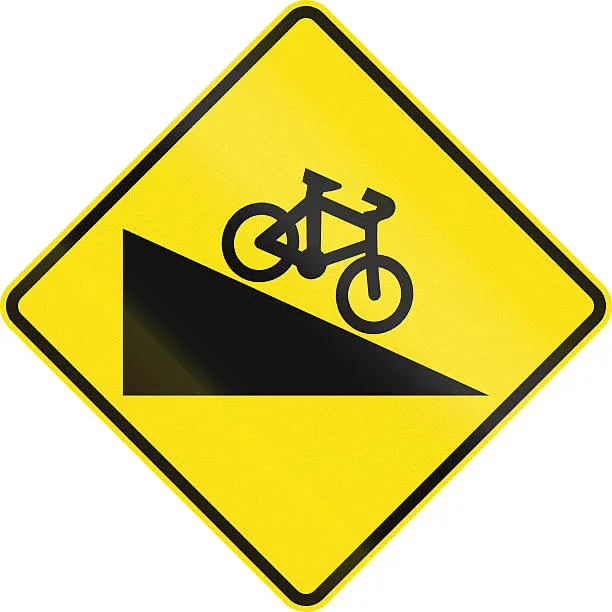 | Steep Descent Sign This sign is the opposite of the steep climb sign. It warns cyclists of an incoming steep descent. Cyclists should prepare for a steep descent. |
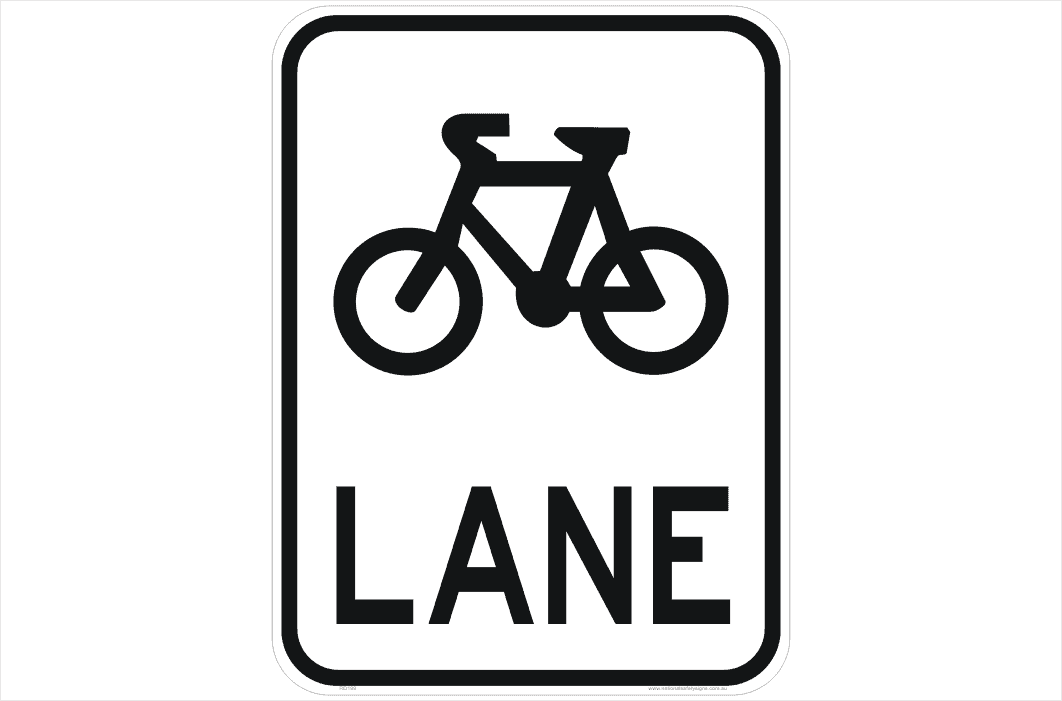 | Bicycle Lane Sign This sign indicates the start of a “bicycle-only lane”. Usually seen in places with multiple lanes where there are many cyclists. |
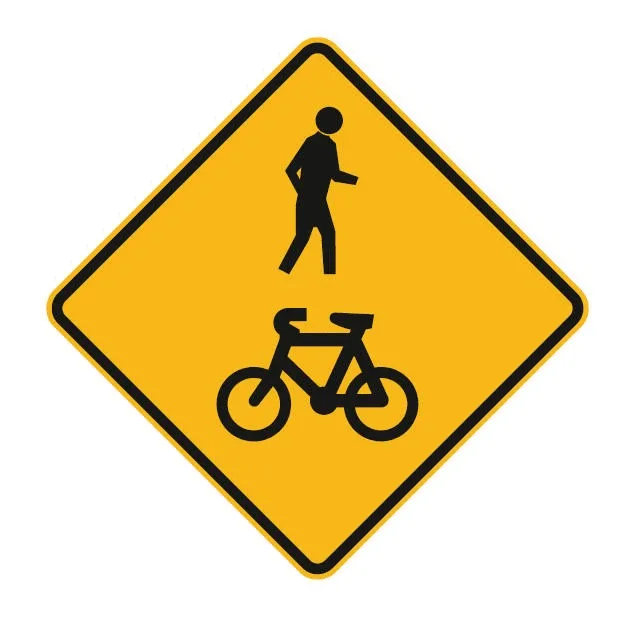 | Shared Path Warning Sign This sign indicates that cyclists must share the road with other pedestrians. Usually seen in crowded areas where roads or sidewalks are small and narrow. |
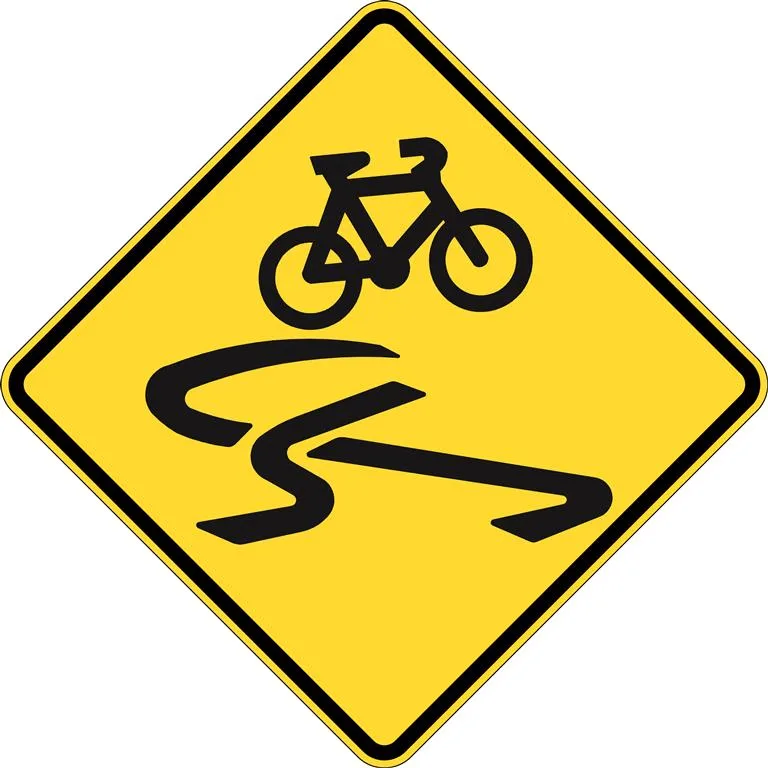 | Slippery for Bicycles Sign This sign warns cyclists of hazardous pathway conditions. It is recommended for the biker to dismount their bike or proceed with extra caution. Usually seen in snowy regions or during the winter. |
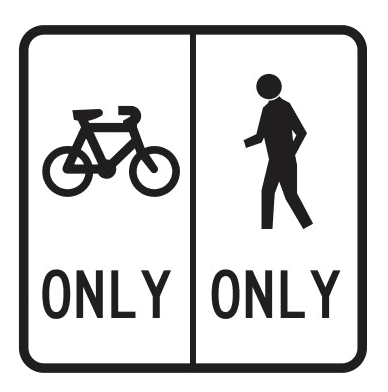 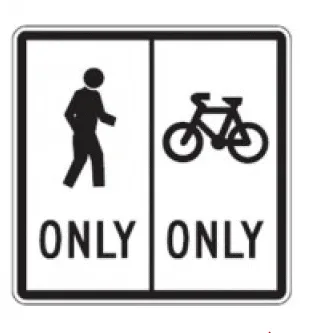 | This sign indicates that cyclists should ride on the left/right of a lane while pedestrians stay on the right/left. No vehicles other than bicycles are allowed. |
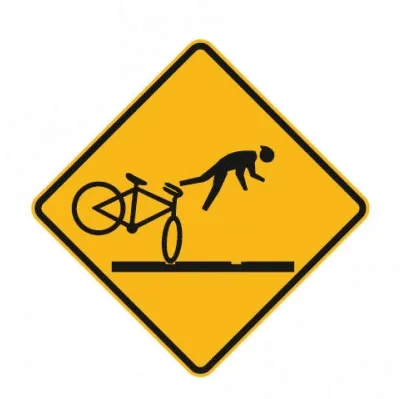 | This sign warns cyclists of hazardous pathway conditions. It is recommended for the biker to dismount their bike or proceed with extra caution. Usually seen in places with bumpy or uneven roads. |
Other Cycling Rules You Must Follow when Riding
While road signs are a must-follow when riding on various roadways, there are also many rules and laws the cyclists must abide by. Although these rules vary from country to country, a majority of them are identical. After all, these laws are put into place to keep everyone on the road safe and protected. Read carefully and get into the habit of practicing these until they become second nature while riding:
- Cyclists should yield to pedestrians and other vehicles
Regardless of whether you are approaching a motorized-vehicle, a car or another two-wheeled vehicle that is travelling a slower pace in front of your bicycle, you must yield and wait before passing. You must also yield to pedestrians and others that are crossing the roadway.
- Do NOT cycle in the opposite direction of traffic
When cycling on any roadway, including small neighbourhood roads, you must cycle in the same direction as the flow of traffic. You should be aware of which direction you are travelling in. Also, this varies from country to country; in Canada and the US, you travel on the right side of the road. In the UK and Australia, you travel on the left side of the road. You should use the side-most part of the road (regardless of which side) if you travel at a slow pace.
You can read about why this is important in my article “Do Bicycles Travel With or Against Traffic”.
- Avoid riding on the sidewalk unless absolutely necessary or specifically stated.
In most states, this is a law that cyclists must abide by. In others, this is an unsaid rule. Riding on the sidewalk puts both you, the cyclist, and pedestrians in danger of unexpected incidents. Riding on the sidewalk also makes you nearly invisible to vehicles that are turning on the roadway. Studies have shown that riding on the sidewalk poses a greater threat for vehicular accidents than when you ride on the roadway itself.
- Use hand signals, especially when you cycle on roadways.
While this is not required, by law, for cyclists to do, it is very important in order to ensure your safety. Using hand signals alerts others on the road what you plan to do or where you are planning to travel. It is also strongly recommended that you use bicycle lights and reflectors in conjunction to guarantee your safety. Hand signals should be used when you make a turn or stop or slow down on the roadway
- Wear a helmet.
In many places around the globe, a helmet is required for those under a specific age requirement. While it is not required for all cyclists to wear a helmet when cycling, it is strongly recommended that you do so. It protects your head in the case that you get into a traffic accident.
- Use bicycle lanes when available.
Some places have bicycle lanes that are available on certain roads. Not only are they more efficient for the rider — because it allows you to travel at your own pace without slowing down traffic — but it is also safer. You will not be competing for the road with other vehicles during rush hour!
- Do NOT cycle while intoxicated.
This rule does not only apply to operating motorized-vehicles. Cycling while under the influence of alcohol or drugs greatly increases the chance of vehicular accidents and crashes. It endangers not only yourself, but also everybody else on the road.
- Ensure your bicycle has brakes installed.
While most bicycles have brakes pre-installed when purchased, some do not. Before riding on the roadway, ensure that your bicycle has brakes installed. In fast-paced scenarios, they allow you to control and stop your bicycle at any time. A bicycle without brakes is extremely dangerous, especially in crowded areas.
- Use bicycle lights if you plan to ride after dark.
In most places, it is actually illegal to cycle at night without using any reflectors at light. Ensure that you follow these rules and laws before taking a nighttime trip. Even in the case that this is not required by law, it is essential that you not only use bicycle lights and reflectors, but also that you wear bright clothing when cycling at night. These preparations make you more visible to oncoming traffic and passing cars. In doing so, it greatly diminishes the chance of traffic accidents and dangerous situations.
Final Thoughts
Depending on where you live, there are many road signs you must follow as a cyclist. On top of that, you must remember to follow all traffic signals that a motorized vehicle would. This includes traffic lights, stop signs, railway crossings, and yielding to pedestrians. Ensure you understand what each and every traffic sign on the road indicates, based on your location. Road signs vary from country to country and state to state.
Some signs only appear in certain countries, while others may vary. If you are unsure, there are plenty of resources online you can access, based on your location and destination. Remember to stay safe and be aware of your surroundings when cycling on the road. Not only yours, but everyone’s safety on the road should always be a top priority!
